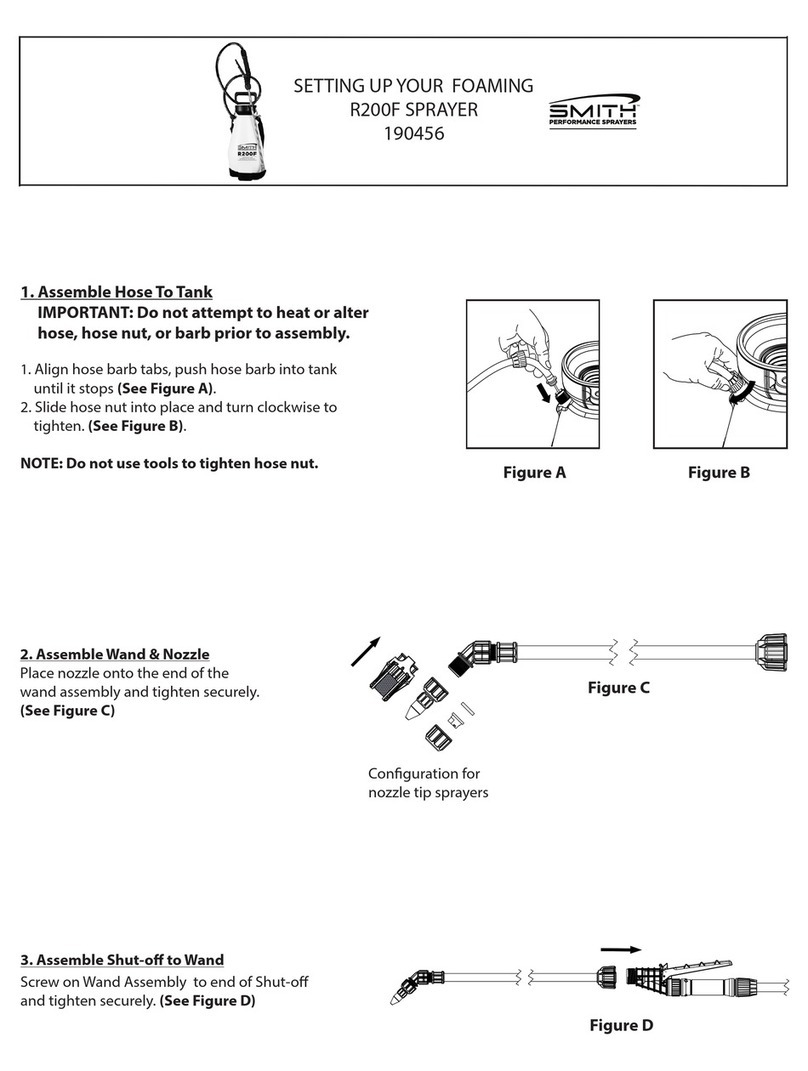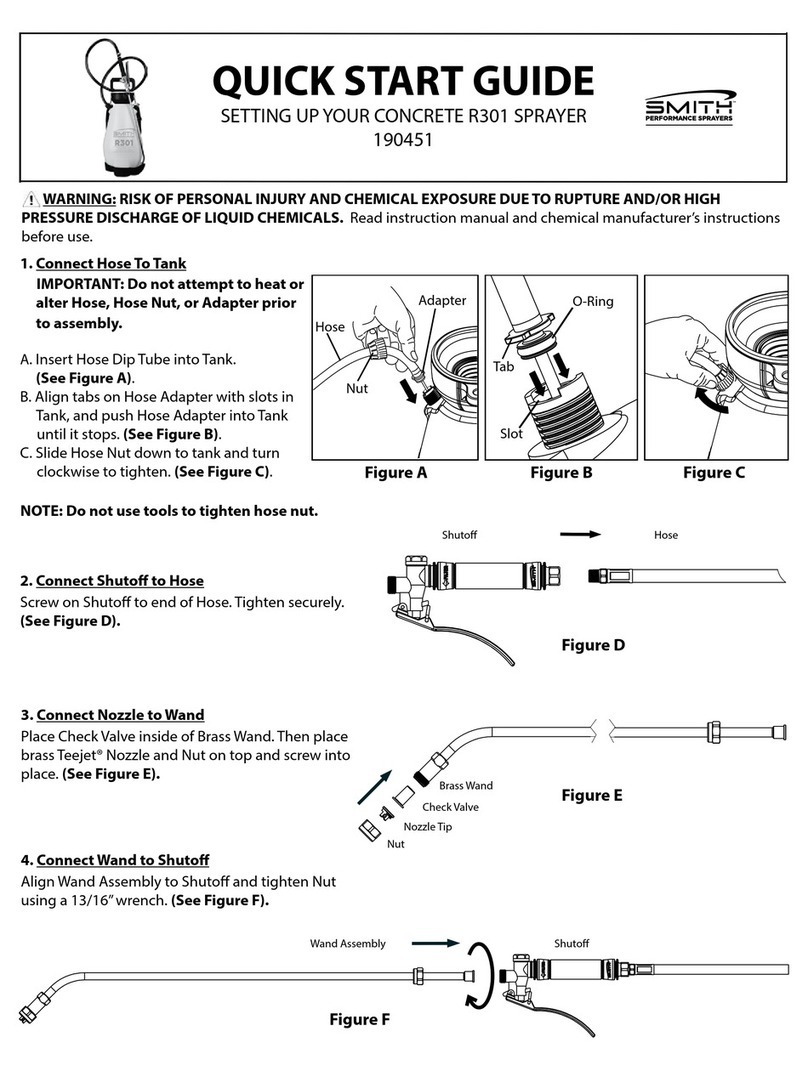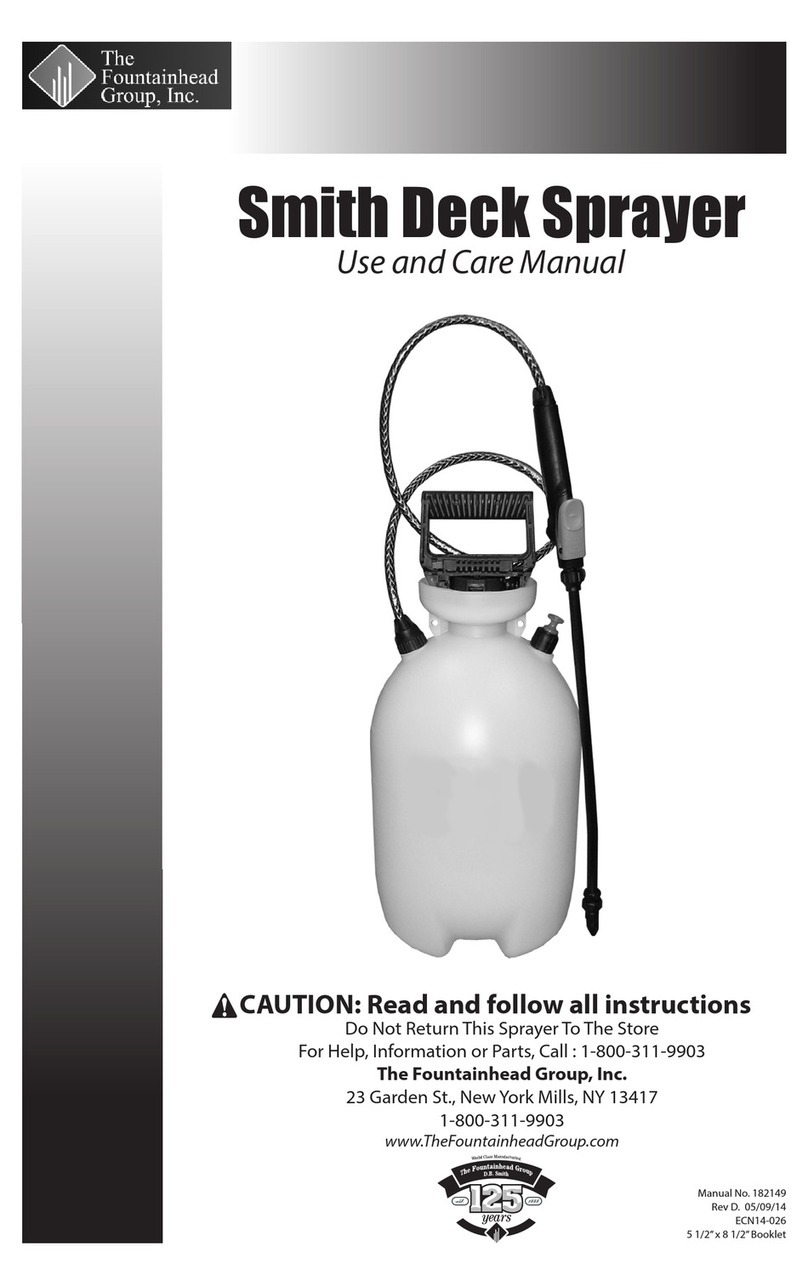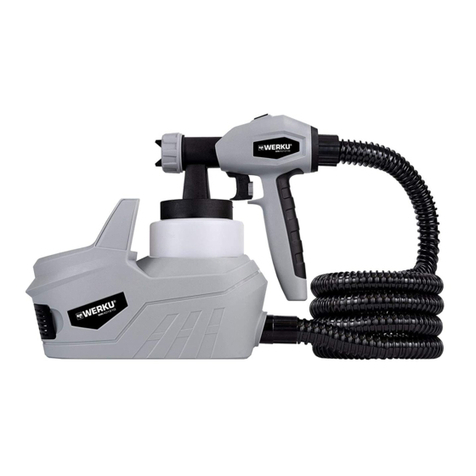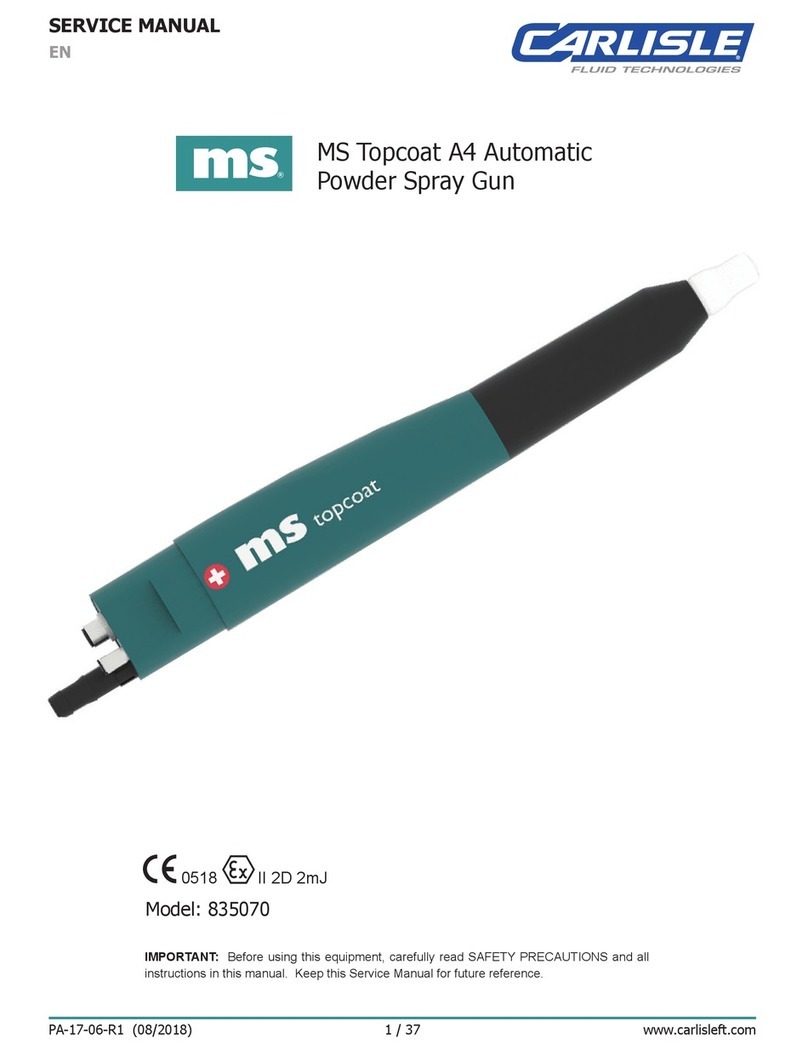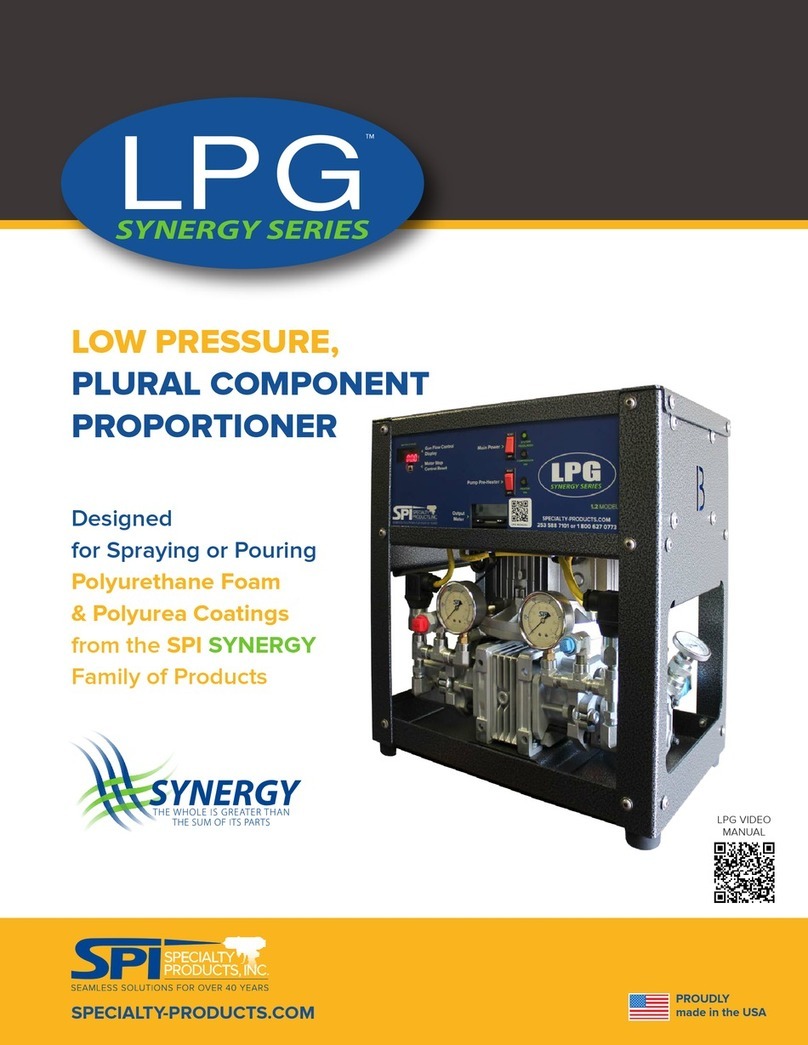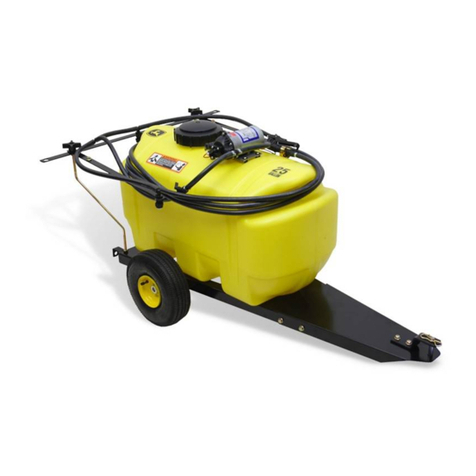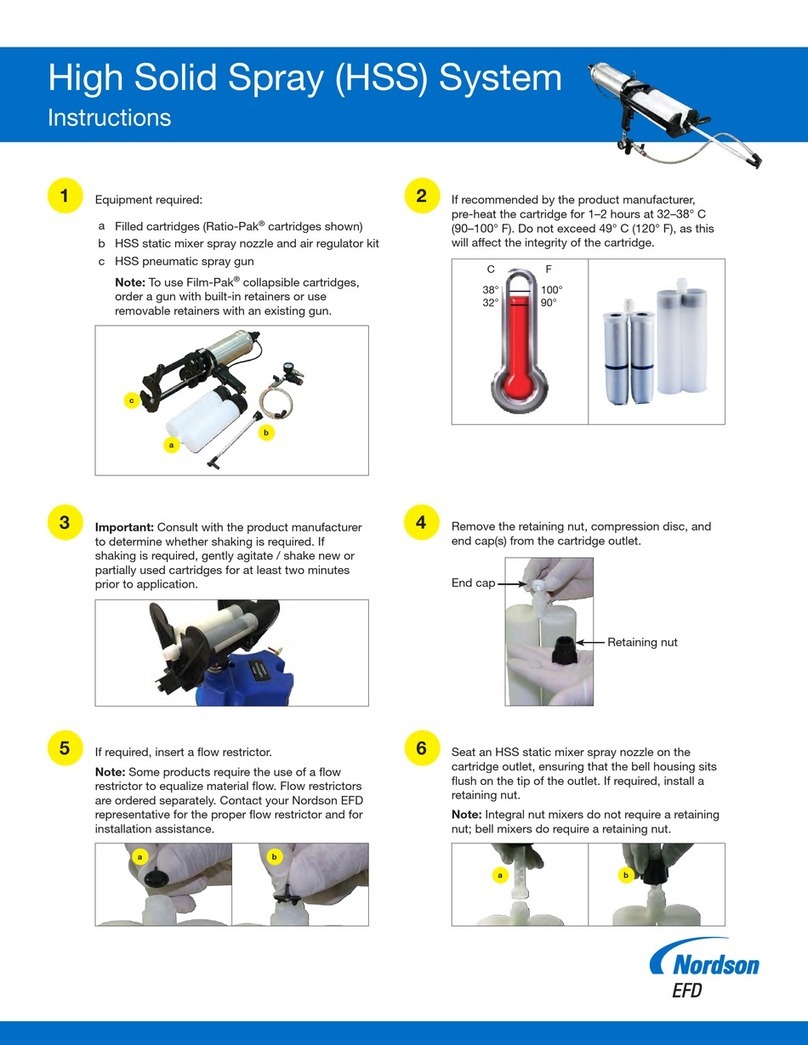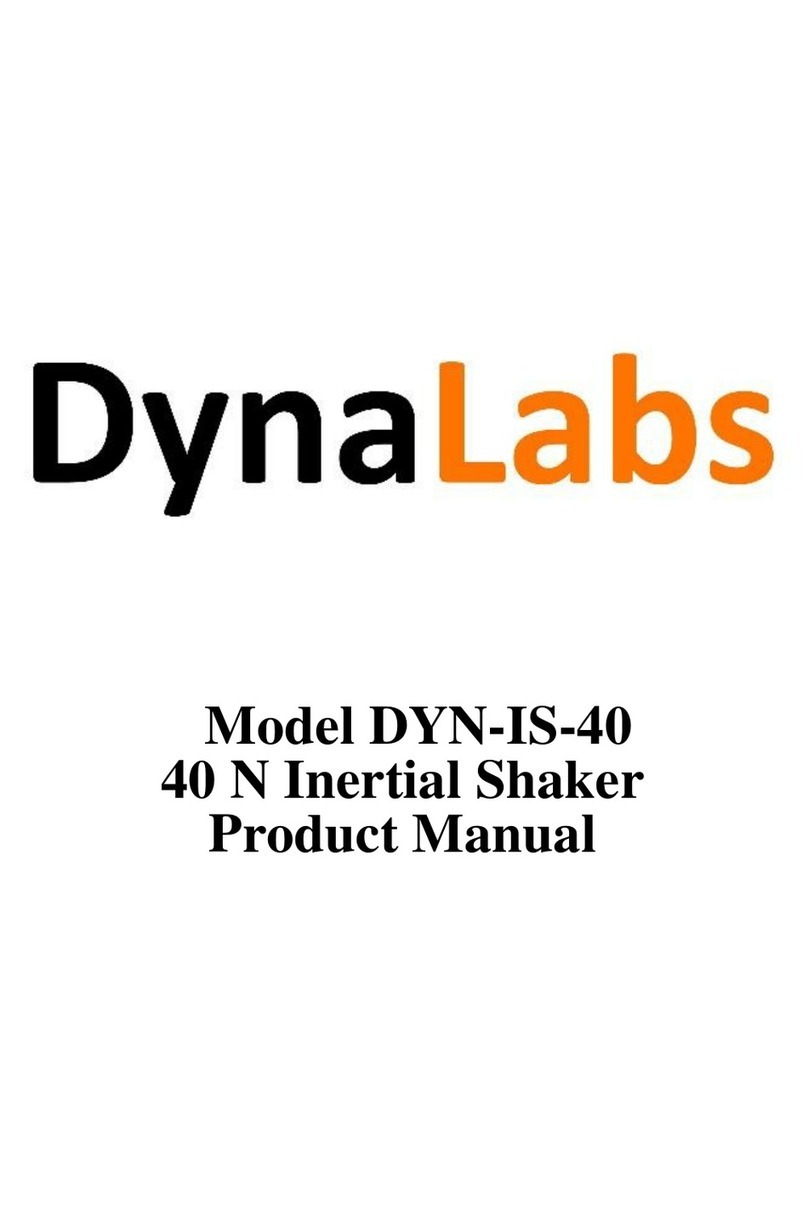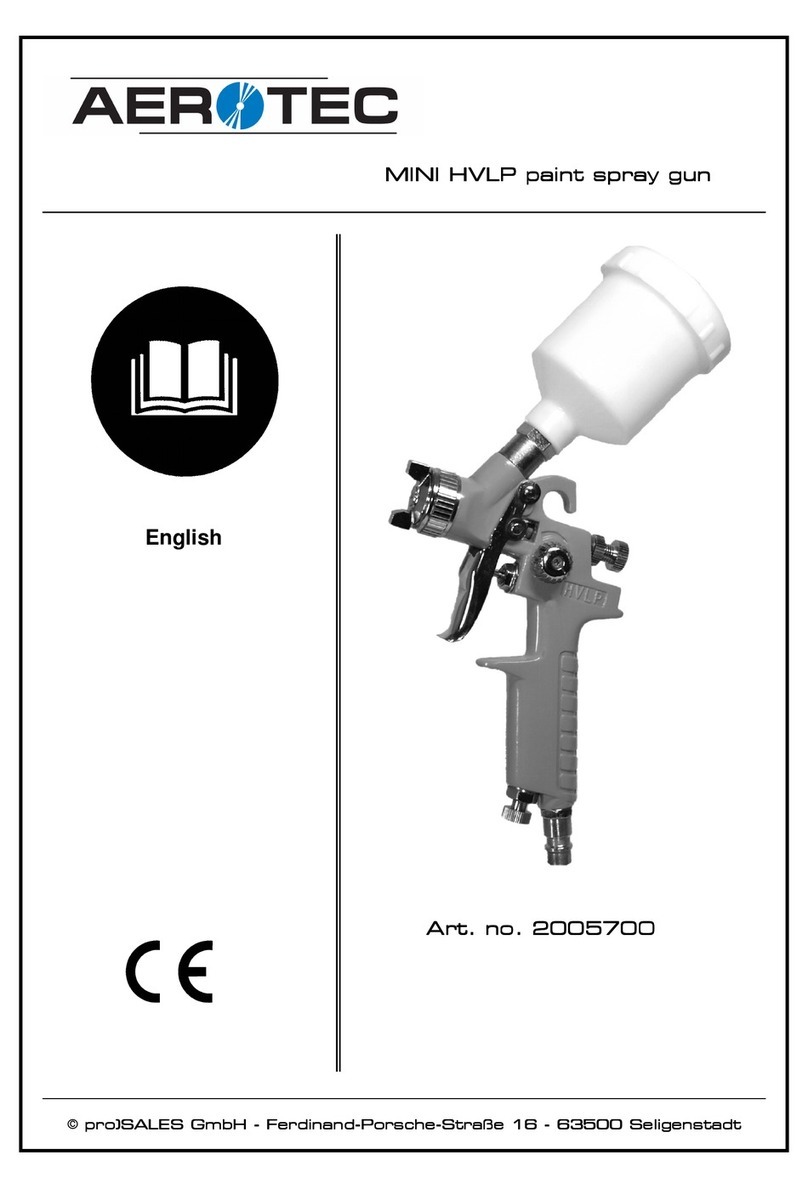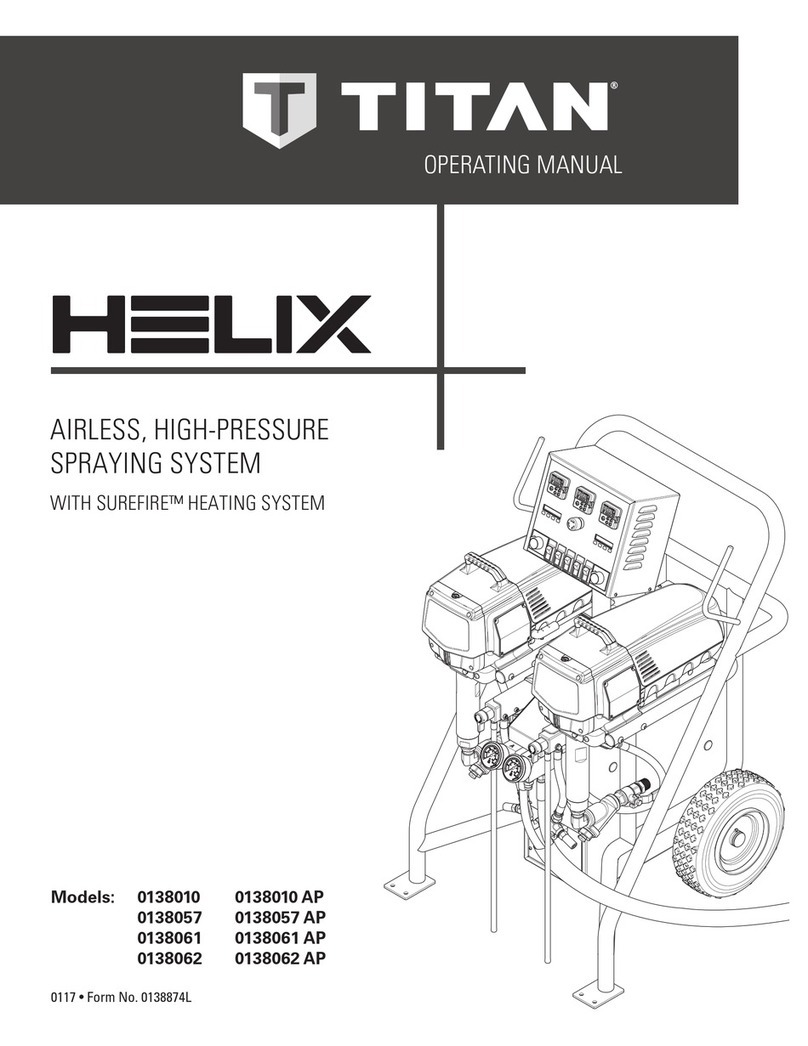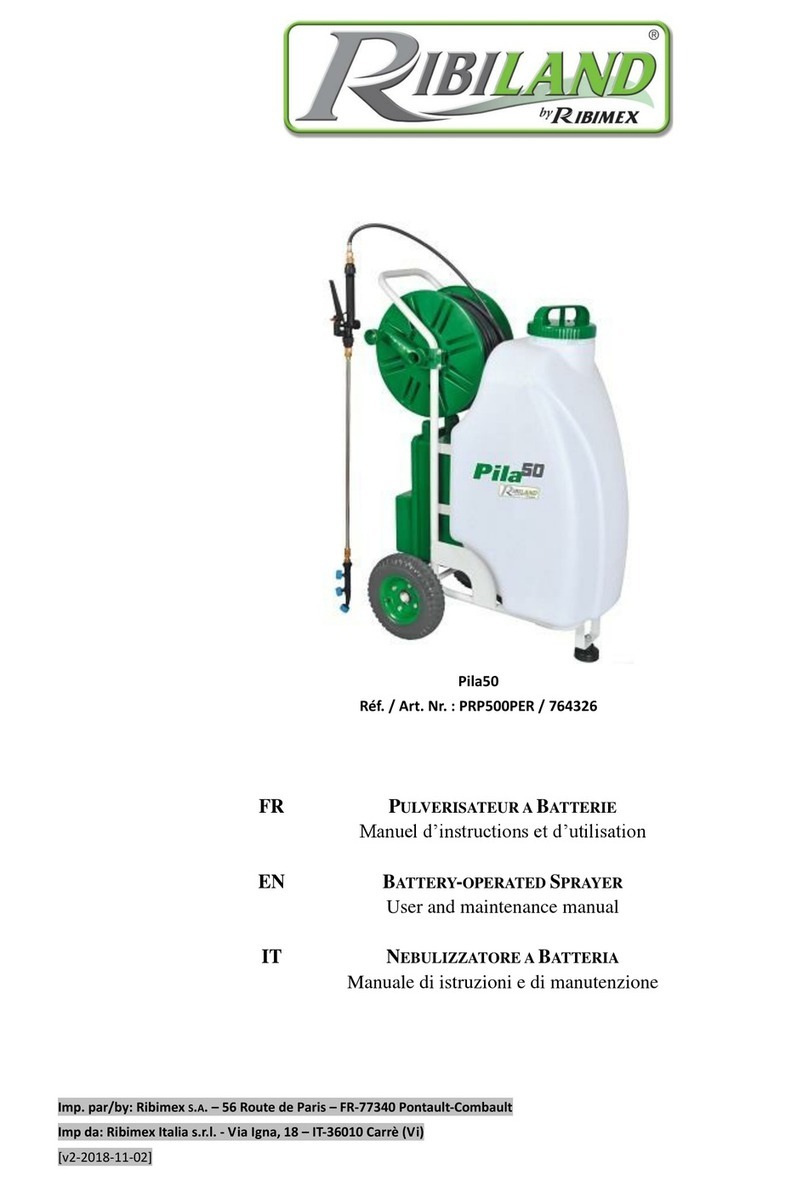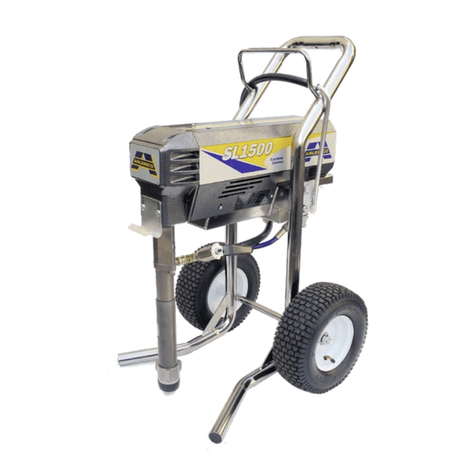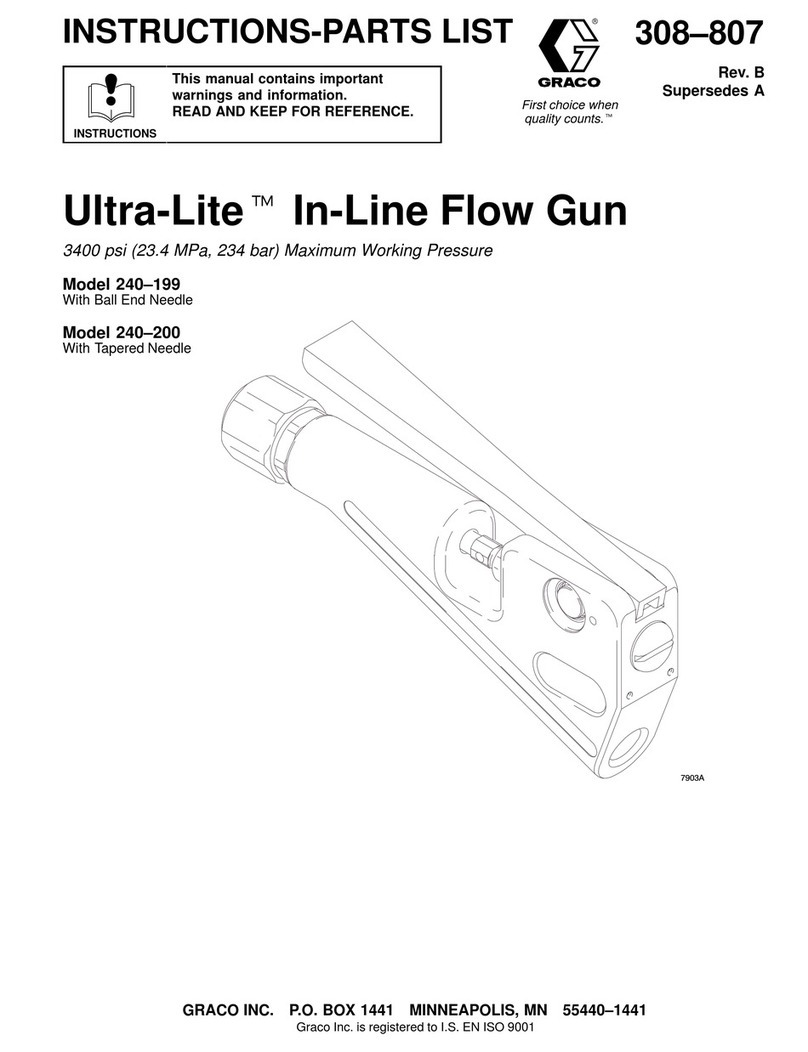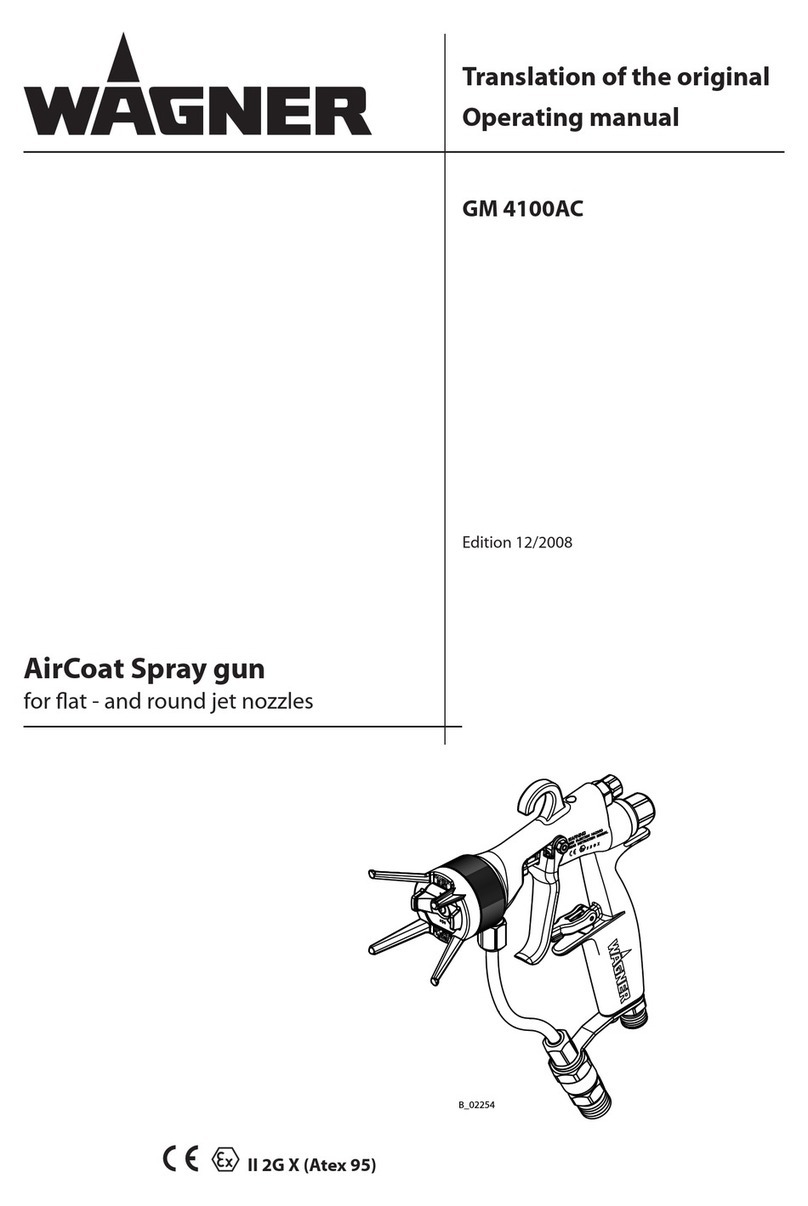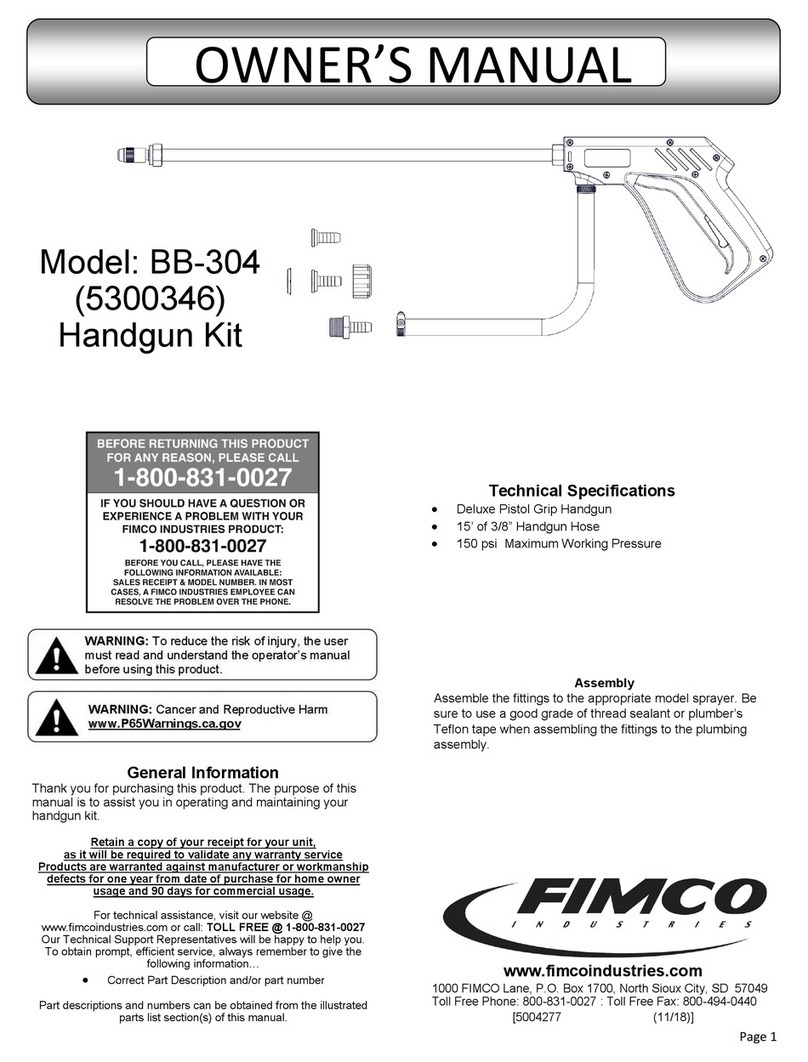Smith XP100P User manual

XP100P Pest Control Sprayer
INSTRUCTION MANUAL
www.thefountainheadgroup.com
23 Garden St. New York Mills, NY, 13417
Do not return this product to the store.
For help, information, or parts contact:
WARNING
Read and fully understand manual
before using this product.
Failure to follow instructions could
result in death or serious injury.
MODEL #: 190728
MANUAL #: 185189-A
12/2021

2
CONTENTS
IMPORTANT SAFETY INSTRUCTIONS .............................................................................................................................................................................................3
Definitions ...................................................................................................................................................................................................................................... 3
CHEMICAL USE SAFETY .................................................................................................................................................................................................................3
SPRAYER SAFETY ...........................................................................................................................................................................................................................3
Additional Safety Information ............................................................................................................................................................................................... 4
INTRODUCTION ..............................................................................................................................................................................................................................4
ASSEMBLY .....................................................................................................................................................................................................................................4
Assembling the Hose to the Tank ......................................................................................................................................................................................... 4
Assemble Hose, Extension, Shut-Off & Nozzle ................................................................................................................................................................. 5
OPERATION ....................................................................................................................................................................................................................................5
Charging the Pump Internal Battery ................................................................................................................................................................................... 6
Filling the Sprayer ........................................................................................................................................................................................................................ 6
Powering-On and Spraying .................................................................................................................................................................................................... 7
CLEANING ......................................................................................................................................................................................................................................7
Cleaning & Storage ..................................................................................................................................................................................................................... 7
MAINTENANCE ..............................................................................................................................................................................................................................8
Nozzle Maintenance .................................................................................................................................................................................................................. 8
Shut-off Maintenance (Repair Kit) ....................................................................................................................................................................................... 8
FCC COMPLIANCE ..........................................................................................................................................................................................................................9
TROUBLESHOOTING GUIDE .........................................................................................................................................................................................................10
KITS, PARTS, AND ACCESSORIES ..................................................................................................................................................................................................12

3
IMPORTANT SAFETY INSTRUCTIONS
Denitions
DANGER: Indicates a hazardous situation that, if not
avoided, will result in death or serious injury.
WARNING: Indicates a hazardous situation that, if
not avoided, could result in death or serious injury.
CAUTION: Indicates a hazardous situation that, if
not avoided, could result in minor or moderate injury.
NOTICE: Indicates information considered
important, but not hazard-related (e.g. messages
relating to property damage).
WARNING: WHEN USING ELECTRICAL SPRAYERS,
BASIC PRECAUTIONS SHOULD BE FOLLOWED,
INCLUDING THE FOLLOWING:
• Read all the instructions before using the sprayer.
• To reduce the risk of injury, close supervision is
necessary when an appliance is used near children.
• Only use attachments recommended or sold by the
manufacturer.
• For reachable sprayers, Use only the charger
supplied by the manufacturer to recharge.
CHEMICAL USE SAFETY
DANGER: RISK OF DEATH, SEVERE PERSONAL INJURY,
AND/OR PROPERTY DAMAGE FROM IMPROPER
CHEMICAL USE OR MIXTURE.
• Never use flammable or combustible chemicals in
this sprayer. Spraying flammable or combustible
chemicals can create combustible fumes that could
be ignited, causing an explosion.
• Use only chemicals indicated for spraying
applications. Some chemicals may create a toxic or
other hazardous atmosphere when sprayed.
• Always refer to chemical manufacturer’s instructions
and/or the chemical Safety Data Sheet (SDS) for
proper mixture and safe application.
SPRAYER SAFETY
WARNING: RISK OF PERSONAL INJURY AND/OR
PROPERTY DAMAGE DUE TO CHEMICAL EXPOSURE.
WARNING: DO NOT EXPOSE TO RAIN, STORE
INDOORS.
• Read and understand the entire instruction manual
before using this sprayer.
• Follow all instructions and precautions in the
instruction manual when using this sprayer.
• Read and follow all instructions and precautions on
chemical manufacturer’s label of chemicals used in
this sprayer.
• Use the appropriate Personal Protective Equipment
(PPE) as recommended by the chemical
manufacturer and/or refer to the chemical Safety
Data Sheet (SDS) of the chemical being used. This
includes at least goggles, gloves, and protective
clothing. Failure to use appropriate PPE could result
in chemical exposure through skin contact, eye
contact, inhalation, or other means.
• After initial assembly, extended storage, or any
possibly damaging event, such as a fall, always
inspect the sprayer for damage, and test it with
plain water to check for proper function. Ensure all
connections are secure and leak free, and the hose
is free from damage, prior to using the sprayer with
chemical.
• Always inspect the hose and all connections before
each use. A damaged hose or loose connections
could result in an uncontrolled high-pressure
discharge of chemical.
• Do not spray near open flame, hot surfaces, or
anything that could vaporize the spray. Doing so
could create a dangerous chemical atmosphere.
• Never use caustics, bleach, acids, hot water, or
pressure-producing chemicals in this sprayer.
• Keep the sprayer and all chemicals out of the reach
of children and pets.
• Only spray when the air is calm (no wind or air
movement) to prevent chemical spray from drifting
onto non-targeted surfaces.
• Always release pressure when the sprayer is not in
use and before performing any maintenance or
cleaning.
• Never store chemicals in the sprayer.
• Store or dispose of any unused chemicals as
instructed by the chemical manufacturer due to the
potential for environmental damage from a spill or
leak, and/or refer to the disposal criteria referenced
in the SDS.
• Clean and rinse the sprayer after each use to
avoid unintended chemical exposure and prevent
contamination of subsequent applications.
• Store the sprayer in a warm, dry, dust-free location
out of direct sunlight.
WARNING: RISK OF PERSONAL INJURY AND/OR
PROPERTY DAMAGE DUE TO RUPTURE AND/OR
UNCONTROLLED HIGH-PRESSURE DISCHARGE OF
LIQUID CHEMICAL.
• Never modify or alter the sprayer from original
condition. Never heat or alter the hose, hose nut, or
barb. Doing so could weaken the components and/
or connections.
• Use only replacement parts from original
manufacturer. Other replacement parts are not
compatible with this sprayer.
ENGLISH

4
• Never pressurize the sprayer with any device
other than the pump supplied by the original
manufacturer. Use of an air compressor or other
non-standard device to pressurize the system could
exceed the safe working pressure of the sprayer.
• Do not lift, carry, or pull the sprayer by the hose,
shut-off, or wand extension. Doing so could
weaken the components and/or connections. Carry
by the handle or harness only, making sure the
connections are properly secured before lifting.
• To reduce the risk of electrical shock, do not put the
sprayer in water or other liquid. Do not place or store
the sprayer where it can fall or be pulled into a tub
or sink.
Additional Safety Information
WARNING: Never modify the sprayer or any part
of it. Damage or personal injury could occur.
SAVE THESE INSTRUCTIONS
FOR FUTURE USE
INTRODUCTION
This is an electric-powered compressed-air style tank
sprayer that is designed to spray liquid chemicals
typically used for pest control.
This Sprayer uses an internal rechargeable Lithium-Ion
Battery to power an electric air compressor Pump.
The PumpZero Electric Pump is designed to provide a
more convenient and more consistent alternative to
standard manual pumps. It operates by pressurizing
the air above the uid in the Tank, which causes the
uid to be pushed through the Hose, to the Nozzle,
and sprayed out. Because the PumpZero Electric Pump
operates by pressurizing air in the Tank, it is important
that a good air seal is achieved when the Pump is
tightened into the Tank.
While actively spraying it is normal for the Pump to
turn on and o by itself periodically; it is not expected
to run continuously. The Pump will pressurize the air
inside the Tank, then turn o and let the air pressure
do the work of spraying out the uid. As the uid
is sprayed out, the air pressure inside the Tank will
decrease, eventually causing the Pump to turn on
again. Having the Pump turn on and o in this manner
allows for longer Battery life and greater Pump
longevity, compared to a continuously running Pump.
The PumpZero Electric Pump contains an internal
Lithium-Ion Battery. The shipment of Lithium-
Ion Batteries is subject to international shipping
regulations. Accordingly, the Battery must be in a
reduced-charge state for shipping, so the Pump must
be charged prior to initial use. As with all products
containing Lithium-Ion Batteries, consult your local
shipping agent for instructions prior to shipping the
Pump.
The PumpZero Electric Pump is equipped with an
auto-o feature that turns the Pump o after 2 hours
of inactivity. This is to prevent the Battery from being
drained if the Pump is left on when the Sprayer is not
in use.
ASSEMBLY
WARNING: RISK OF PERSONAL INJURY AND/OR
PROPERTY DAMAGE DUE TO CHEMICAL EXPOSURE.
After initial assembly, always inspect the sprayer for
damage, and test it with plain water to check for
proper function. Ensure all connections are secure
and leak free, and the hose is free from damage, prior
to using the sprayer with chemicals.
WARNING: Only use attachments recommended or
sold by the manufacturer.
WARNING: For Household Use Only.
Assembling the Hose to the Tank
NOTICE: Do not attempt to heat or alter hose, hose
nut, or barb prior to assembly.
1. Align Hose Barb tabs, push Hose Barb (1) into
Tank until it stops.
1. Slide Hose Nut (2) into place and turn clockwise
to tighten
NOTE: Do not use tools to tighten Hose Nut.
2
1
ENGLISH

5
Assemble Hose, Extension, Shut-O & Nozzle
1. Attach hose to Shut-O and tighten securely
using a 9/16" Wrench, use a 3/4" Wrench to hold
the Shut-O handle while tightening the hose.
2. Install the extension onto the Shut-O assembly
and tighten the nut securely using a 13/16"
wrench.
3. Install selected nozzle into the extension nut
and tighten nut securely using a 13/16" wrench.
Insert check valve if required as shown.
1
2
3
OPERATION
WARNING: RISK OF PERSONAL INJURY DUE TO
CHEMICAL EXPOSURE. Use the appropriate Personal
Protective Equipment (PPE) as recommended by the
chemical manufacturer and/or refer to the chemical
Safety Data Sheet (SDS) of the chemical being used.
This includes at least goggles, gloves, and protective
clothing.
WARNING: To reduce the risk of serious personal
injury, turn unit OFF before making any adjustments
or removing/ installing attachments or accessories.
An accidental start-up can cause injury.
NOTICE: The battery is not fully charged out of the
carton. Before using read the safety instructions
below and then follow the charging procedures
outlined.
A E
F
G
B
C
D
HI
A Power Button
B Light
C Charging Port Cover
D Charging Port
E Handle
F Pump Zero Pump
G Ressure Release Valve
H Nozzle, 4 Way, Brass,
SPS
I Unijet Tip SS, Nozzle
50015E-SS
ENGLISH

6
Charging the Pump Internal Battery
1. In a dry, clean location insert the Charger Plug
into a standard electrical wall outlet. On the
end of the Pump handle (E), remove the rubber
Cover (C) to expose the Charging Port (D). Plug
the Charger Cable into the Charging Port on
the Pump. The Light (B) on the top of the Pump
should start ashing green.
a. The Pump cannot be operated while charging.
The Pump must be disconnected from the
Charger to permit further use.
b. If the Light on the Pump ashes red, the
Battery is too hot to be safely charged. This
can happen when the Battery is used heavily
in very hot weather or if the Battery is stored
in a very hot location (such as in an enclosed
vehicle or storage unit during very hot
weather). If this happens the Battery must be
allowed to cool before it can be charged.
c. If the Light on the Pump ashes red and green
alternately, this means the Battery has been
damaged and cannot be charged within the
safe charging time limit. The internal Battery
cannot be serviced, so the Pump must be
replaced.
10. Ensure the Pump and Charger are placed
where they will not be exposed to liquids, falls or
other sources of damage for the duration of the
charging period.
11. When charging is complete the Light will
remain green and stay on constantly. Charging
time will vary depending on Battery condition at
the start of charging. Charging time should not
exceed 3hours.
12. Remove the Charger Cable from the Pump
once charging is complete. Pumps should not be
connected to the Charger during long periods of
storage. To ensure optimal Battery life the Pump
should be charged at least once every 3 months
when not in use.
13. Reinsert the rubber Cover into the Charging
Port to protect it.
14. Unplug the Charger from the electrical wall
outlet when not in use.
D
C
Filling the Sprayer
DANGER: RISK OF DEATH, PERSONAL INJURY
AND/OR PROPERTY DAMAGE FROM IMPROPER
CHEMICAL USE OR MIXTURE. Never use flammable
or combustible liquids, caustics, acids, or hot water
in this Sprayer. Spraying flammable or combustible
liquids can create combustible fumes that could
be ignited by the electrical system in the Sprayer,
causing an explosion. Always refer to chemical
manufacturer instructions for proper mixture. Always
wear appropriate personal protection equipment
as instructed by chemical manufacturer when
using, preparing, handling, spraying, or disposing of
chemicals. This includes at least goggles, gloves, and
protective clothing.
WARNING: Inspect the sprayer, hose, shut-off, wand,
and all connections for damage before each use.
A damaged or loose hose connection can result in
unintended exposure to the pressurized chemicals,
resulting in serious injury or property damage.
WARNING: RISK OF DAMAGE TO INTERNAL
COMPONENTS. Use of chemicals other than water
based or water soluble solutions may damage the
Sprayer and will void the warranty.
1. Ensure that the Pump is turned OFF (Light is
OFF).
2. Pull up on the knob of the Pressure Release Valve
(G) until all the pressure is released from the tank.
3. Turn the Pump handle (E) counterclockwise to
remove the pump.
4. Fill the Tank to the desired level. See volume
gradation markings markings on side of Tank.
(Always refer to chemical manufacturer for
proper mixture).
5. Install the Pump into the Tank opening and turn
clockwise until tightly sealed against the Tank.
G
EE
ENGLISH

7
Powering-On and Spraying
WARNING: RISK OF UNINTENDED SPRAYING AND
CHEMICAL EXPOSURE. Ensure that the Shut-off is in
the closed position (Lever released) before pressing the
Power Button. The Sprayer will spray if the Shut-off is
open (Lever depressed) when the power is turned ON.
NOTICE: RISK OF PROPERTY DAMAGE. Do not
attempt to heat or alter hose, hose nut, or barb prior
to assembly. Only spray when the air is calm (no wind
or air movement) to prevent chemical spray from
drifting into unintended areas.
1. The PumpZero Pump must be charged for the
Sprayer to operate. See Charging the Pump
Internal Battery.
2. Press the Power Button to turn on the Pump and
begin pressurizing the Tank.
a. The Light on the top should turn green and an
audible hum should be heard, indicating the
Pump is running and is pressurizing the Tank.
b. The Pump will turn o once the Tank is
pressurized, which may take 30 seconds to
several minutes depending on the size of the
Tank and the amount of uid in it.
c. It is permissible to start spraying before the
Tank is fully pressurized, but in order to avoid a
sub-optimal spray pattern it is recommended
to wait at least 20 seconds to allow some
pressure to build in the Tank.
3. Aim the Wand in the desired direction of
spraying and depress the Shut-o Lever (1).
4. For continuous spraying, depress the Lever
and rotate the Lock (2) to hold the Lever in the
depressed position.
5. Unlock, if needed, and release the Shut-o Lever
to stop spraying.
6. To turn o the Sprayer press the Power Button
(A). The Light will turn OFF.
7. Note that the Tank is still pressurized even
though the Pump has been turned OFF.
8. Always remove any chemical and clean the
Sprayer when nished using. See Cleaning &
Storage.
1
2
CLEANING
Cleaning & Storage
WARNING: Always release pressure from the sprayer
prior to cleaning. Disassembly of a sprayer that is still
pressurized may result in the high-speed ejection of
components.
WARNING:RISK OF PERSONAL INJURY DUE TO
CHEMICAL EXPOSURE. Always wear appropriate
personal protection equipment as instructed by
chemical manufacturer when using, preparing,
handling, spraying, or disposing of chemicals. This
includes at least goggles, gloves, and protective
clothing.
WARNING:RISK OF DAMAGE TO INTERNAL
COMPONENTS. Failure to properly rinse out the
Sprayer may allow chemical residue build-up that
can clog or damage the Filters, Pump, Shut-off,
Wand, and Nozzle. Chemical residue build-up can
also contaminate subsequent applications. Leaving
chemical liquids in the Sprayer when not in use can
lead to premature Sprayer wear. Never store Sprayer
with chemical in any part of the Sprayer.
1. Turn o the Pump by pressing the Power Button.
The light on the top of the Pump should turn o.
15. Operate the Pressure Release Valve on the side
of the Tank by gently pulling it outward until the
air inside the Tank stops owing out.
16. Remove the Pump from the Tank by turning it
counterclockwise. Avoid placing the Pump down
where it may become contaminated with dirt,
grass clippings, or debris that could later enter
the Tank.
17. Empty any extra chemical from the Tank
into a suitable container for later use or
disposal according to chemical manufacturer’s
instructions.
18. Use clean water to thoroughly rinse and
empty the Tank until all chemical and residues
are removed.
19. Use a wet cloth to wipe the bottom of
the Pump until all chemical and residues are
removed. Do not rinse the Pump with a hose
or submerge in water, as water will enter the
Housing, damaging the electrical components,
rendering the Pump non-functional, and voiding
the warranty.
20. Add approximately 1 quart [1 liter] of clean
water to the Tank.
21. Attach the Pump to the Tank and tighten
rmly.
22. Press the Power Button so the Pump will
pressurize the Tank.
ENGLISH

8
ENGLISH
23. With clean water in the clean Tank, spray water
through the Hose, Shuto, Wand, and Nozzle for
at least 30 seconds to rinse them out. Failure to
rinse out the Hose, Shuto, Wand, and Nozzle
may allow chemical residue build-up that can
clog or damage the components. After heavy
use rinsing the Nozzle may not be enough to
remove residue. The Nozzle may need to be
cleaned with a small brush.
24. Press the Power Button to turn o the Pump.
25. Operate the Pressure Release Valve on the side of
the Tank to release pressure.
26. Remove the Pump. Avoid placing the Pump
down where it may become contaminated with
dirt, grass clippings, or debris that could later
enter the Tank.
27. Open the Shut-o (depress Lever) to drain any
remaining water from the Hose, Shut-o, and
Wand.
28. Empty out any remaining water from the Tank.
29. Allow the Sprayer to dry. This is best done by
hanging the Tank upside down to let it drain.
30. Once the Sprayer is dried turn the Sprayer
upright and loosely assemble the Pump to the
Tank to prevent debris from entering the Tank.
31. Store the Sprayer, Pump, and Charger indoors in
a warm, dry location out of direct sunlight and
away from any sources of moisture or intense
heat. Do not store Sprayer where freezing
temperatures (below 32°F/0°C) will occur.
Allowing water to freeze inside the Sprayer
may damage the Pump, Seals, Shuto, or other
components, and void the Sprayer warranty.
32. To ensure optimal Battery life the Battery should
be charged at least once every 3 months when
not in use. See Charging the Pump Internal
Battery.
MAINTENANCE
WARNING: Prior to performing maintenance always
depressurize Sprayer by pressing the Power Button
to turn power OFF and then operating the Pressure
Release Valve until all air pressure in the Tank has
been released.
Nozzle Maintenance
1. If nozzle clogs, remove and disassemble the
nozzle assembly.
2. Clean the openings of any obstructions and
reassemble.
3. The brass nozzles should be cleaned with
toothbrush and a detergent. Don’t use a metal
brush or sharp objects on the nozzle. For tough
clogs soak brass nozzle in xylene and clean with
a brush.
Shut-o Maintenance (Repair Kit)
WARNING: Always depressurize sprayer before
maintenance by activating shut-off and spraying
contents out.
1. Unscrew the handle from the shut-o assembly.
2. Unscrew valve cap and remove valve stem
components and seals as shown. Clean
components with cool clean water.
3. Clean any debris from inside the handle and
shut-o body. Check for any wear of O-rings or
seals (1) and replace as necessary.
4. Reassemble the components as shown and
tighten the handle and valve cap securely.
1
Shuto Service Kit #182906

9
ENGLISH
FCC COMPLIANCE
This device complies with part 15 of the FCC Rules.
Operation is subject to the following two conditions:
(1) This device may not cause harmful interference,
and (2) this device must accept any interference
received, including interference that may cause
undesired operation.
Note: This equipment has been tested and found
to comply with the limits for a Class B digital device,
pursuant to part 15 of the FCC Rules. These limits are
designed to provide reasonable protection against
harmful interference in a residential installation. This
equipment generates, uses and can radiate radio
frequency energy and, if not installed and used in
accordance with the instructions, may cause harmful
interference to radio communications. However, there
is no guarantee that interference will not occur in a
particular installation. If this equipment does cause
harmful interference to radio or television reception,
which can be determined by turning the equipment
o and on, the user is encouraged to try to correct the
interference by one or more of the following measures:
• Reorient or relocate the receiving antenna.
• Increase the separation between the equipment
and receiver.
• Connect the equipment into an outlet on a
circuit dierent from that to which the receiver is
connected.
• Consult the dealer or an experienced radio/TV
technician for help.
Canada IC:
CAN ICES-3 (B)/NMB-3(B)
Manufactured by:
The Fountainhead Group, Inc.
23 Garden Street
New York Mills, NY 13417 U.S.A.
Fax: (315) 768-4220
Email: [email protected]
www.TheFountainheadGroup.com
Frequently Asked Questions
See https://www.thefountainheadgroup.com/ for
specic product FAQ’s.
Patent Numbers
See https://www.thefountainheadgroup.com/ for
specic product patent numbers.
Replacement parts
See https://www.thefountainheadgroup.com/ for
specic product replacement parts.
Warranty
See https://www.thefountainheadgroup.com/ for
specic product warranty.

10
ENGLISH
TROUBLESHOOTING GUIDE
BE SURE TO FOLLOW SAFETY RULES AND INSTRUCTIONS
For assistance with your product, visit our website at www.thefountainheadgroup.com or call 1-800-311-9903.
PROBLEM POSSIBLE CAUSE SOLUTION
Sprayer will not turn on
when Power Button is
pressed (no audible hum
of the pump.)
Battery not charged. Light does not
turn ON.
Charge Pump if no light is ON. See
Charging the Pump Internal Battery.
Pump is damaged, over heated, or
non-functional. Visually inspect the
Pump for damage. Use the Charger
to diagnose any Battery problem.
See Charging the Pump Internal
Battery.
Replace Pump if damaged or non-
functional. Allow Battery to cool if
overheated.
Tank is already pressurized so the
Pump has turned o auto-matically.
Open the Shut-o (depress Lever) to see if
the Sprayer starts spraying.
Pump is connected to Charger. Disconnect Charger.
Sprayer turns on (audible
hum of pump heard) but
will not spray.
No liquid in Tank. Add liquid to Tank. See Filling the Sprayer.
Shut-o clogged. Clean Shut-o. See Shut-o Maintenance.
Nozzle clogged. Clean Nozzle. See Nozzle Maintenance.
Pump is not tightened to Tank, leaks
at Seal. Tighten Pump to Tank.
Sprayer turns on but only
sprays at low pressure.
Tank not yet pressurized. Allow time for Pump to pressurize Tank
(at least to 20 seconds).
Air leaking from Tank at Seal. Tighten Pump to Tank.
Tank Seal or Seal surfaces are
damaged. Replace Tank Seal.
Shut-o clogged. Clean Shut-o. See Shut-o Maintenance
Nozzle clogged. Clean Nozzle. See Nozzle Maintenance..
Hose Leaks at Tank
connection.
Cracked, swollen or faulty Hose. Replace Shut-o Assembly.
Damaged connection. Replace Shut-o Assembly.
Hose Leaks at Shut-o. Cracked, swollen or faulty Hose. Replace Shut-o Assembly.
Damaged connection. Replace Shut-o Assembly.
Nozzle drips when Shut-
o Lever is released.
Dirt or debris in Shut-o. Clean Shut-o Assembly.
Damaged O-Ring or Seal in Shut-o. Replace Shut-o Assembly.
Nozzle Tip leaks. Flat Seal missing. Install Flat Seal behind Nozzle Tip. See
Assemble Wand, Shut-o and Nozzle
Flat Seal damaged. Replace Flat Seal.
Poor Spray Pattern
Tank is not pressurized. Turn on Pump.
Nozzle partially clogged. Clean Nozzle. See Nozzle Maintenance.
Nozzle damaged. Replace Nozzle.
Shut-o clogged. Clean Shut-o. See Shut-o Maintenance.

11
ENGLISH
PROBLEM POSSIBLE CAUSE SOLUTION
Battery Will Not Charge
Charger not plugged into outlet. Plug Charger into outlet.
No lights illuminated on Pump.
Charger plugged into outlet.
Check that outlet is functioning.
No lights illuminated on Pump.
Charger plugged into outlet, outlet
functioning.
Replace Charger.
Red light continues ashing on
Pump (Battery temperature too high
for safe charging).
Allow Pump to cool.
Red and Green lights ash
alternately on Pump (Battery cannot
be charged).
Replace Pump.

12
ENGLISH
KITS, PARTS, AND ACCESSORIES
Key # Part # Description
1 182379 Nozzle, 4 Way, Brass, SPS
2 185158 Unijet Tip SS, Nozzle 50015E-SS
3 176332 TEEJET -5 check valve, black 5 psi,11750
4 183293 Extension Assy, 18", Brass
5 182641 Seal, Viton, Extension, S/S ( 2 each required)
6 183296 Nut, Brass Extension
7 184741 Hose Assy, NPT & Tank Barb, Nylon & Rubber, 0.313ID x 50L, Black
8 184175 Pump & Charger Kit, US, PZ
9 185225 Tank Assy, 1 Gal R, with Viton PRV (Natural/White)
10 183300 Shuto Assy, Brass, S103E, SPS
11 184242 Plug & Gasket Assy, Red
12 184536 Strap, Carry, Padded, Pro, 64", C/A
1
3
2
7
6
710
5
11
12
9
8

www.thefountainheadgroup.com

Pulvérisateur pour contrôle antiparasitaire XP100P
www.thefountainheadgroup.com
23 Garden St. New York Mills, NY, 13417
Ne pas retourner ce pulvérisateur au magasin
Si vous avez besoin d’aide, de renseignements ou
de pièces, appelez au
AVERTISSEMENT
Read and fully understand manual before
using this product.
Failure to follow instructions could result in
death or serious injury.
MANUEL D’INSTRUCTIONS
MODEL #: 190728
MANUEL #: 185189-A
12/2021

15
CONTENU
CONSIGNES DE SÉCURITÉ IMPORTANTES .....................................................................................................................................................................................17
Définitions .......................................................................................................................................................................................................................................17
SÉCURITÉRELATIVE AUX SUBSTANCES CHIMIQUES....................................................................................................................................................................17
UTILISATION SÉCURITAIRE DU PULVÉRISATEUR...........................................................................................................................................................................17
Renseignements sur le pulvérisateur...................................................................................................................................................................................18
INTRODUCTION ............................................................................................................................................................................................................................18
ASSEMBLAGE ...............................................................................................................................................................................................................................18
Assembler le Boyau au Réservoir..............................................................................................................................................................................18
Assembler le boyau, la rallonge, le dispositif d’arrét et la buse .......................................................................................................................19
FONCTIONNEMENT.......................................................................................................................................................................................................................19
Chargement de la pile interne de la pompe...................................................................................................................................................................20
Remplir le pulvérisateur...........................................................................................................................................................................................................20
Alimentation et pulvérisateur...............................................................................................................................................................................................21
NETTOYAGE...................................................................................................................................................................................................................................21
Nettoyage et entreposage......................................................................................................................................................................................................21
ENTRETIEN....................................................................................................................................................................................................................................22
Entretien de la buse ...................................................................................................................................................................................................................22
Entretien du dispositif d’arrêt (trousse de réparation).................................................................................................................................................22
CONFORMITÉ FCC .........................................................................................................................................................................................................................23
GUIDE DE DÉPANNAGE .................................................................................................................................................................................................................24
TROUSSES, PIÉCES ET ACCESSOIRES.............................................................................................................................................................................................26

16
CONSIGNES DE SÉCURITÉ IMPORTANTES
Dénitions
DANGER : Indique une situation dangereuse qui, si
elle n’est pas évitée, causera la mort ou des blessures
graves.
AVERTISSEMENT : Indique une situation
potentiellement dangereuse qui entraînera la mort
ou des blessures graves si elle n’est pas évitée.
ATTENTION : I Indique une situation
potentiellement dangereuse qui entraînera la mort
ou des blessures graves si elle n’est pas évitée.
AVIS : Indique des renseignements importants à
prendre en considération, sans rapport avec un
danger (p. ex. messages liés à des dégâts matériels).
AVERTISSEMENT : TOUJOURS PRENDRE DES
PRÉCAUTIONS DE BASE LORS DE L’UTILISATION DE
PULVÉRISATEURS ÉLECTRIQUES, NOTAMMENT :
• Lire toute les instructions avant d’utiliser le
pulvérisateur.
• Pour réduire le risque de blessure, une étroite
surveillance est nécessaire lorsque l’appareil est
utilisé à proximité d’enfants.
• N’utiliser que les accessoires recommandés ou
vendus par le fabricant.
• Pour les pulvérisateurs rechargeables, n’utiliser que
le chargeur fourni par le fabricant pour recharger.
SÉCURITÉRELATIVEAUXSUBSTANCESCHIMIQUES
DANGER : RISQUE DE DÉCÈS, DE BLESSURES
PERSONNELLES GRAVES ET DE DOMMAGES
MATÉRIELS DÉCOULANT DE L’UTILISATION D’UNE
SUBSTANCE CHIMIQUE OU D’UN MÉLANGE
INAPPROPRIÉ.
• Ne jamais utiliser des substances inflammables
ou combustibles chimiques dans ce pulvérisateur.
Pulvériser des substances chimiques combustibles
ou inflammables peut créer des vapeurs
combustibles qui pourraient s’enflammer et créer
une explosion.
• Utiliser seulement des substances chimiques
conçues pour la pulvérisation. Certaines substances
chimiques peuvent créer une atmosphère toxique
ou d’autres atmosphères dangereuses lorsqu’elles
sont pulvérisées.
• Pour un mélange approprié et une application
sécuritaire, toujours respecter les directives du
fabricant concernant les substances chimiques
et la fiche signalétique relative aux substances
chimiques.
UTILISATIONSÉCURITAIREDUPULVÉRISATEUR
AVERTISSEMENT : RISQUE DE BLESSURES
PERSONNELLES ET DE DOMMAGES MATÉRIELS
DÉCOULANT D’UNE EXPOSITION À UNE SUBSTANCE
CHIMIQUE.
AVERTISSEMENT : NE PAS EXPOSER À LA PLUIE,
ENTREPOSER À L’INTÉRIEUR
• Lire et comprendre tout le manuel d’instructions
avant d’utiliser ce pulvérisateur.
• Suivre toutes les directives et les précautions de
ce manuel d’instructions lors de l’utilisation de ce
pulvérisateur.
• Lire et suivre toutes les instructions et précautions
sur l’étiquette du fabricant des substances
chimiques qui seront utilisées dans ce pulvérisateur.
• Utiliser l’équipement de protection individuelle (EPI)
approprié comme recommandé par le fabricant
de la substance chimique ou consulter la fiche
signalétique de la substance chimique utilisée. L’EPI
comprend au moins des lunettes de sécurité, des
gants et des vêtements de protection. Ne pas utiliser
l’EPI approprié pourrait entraîner une exposition à la
substance chimique par contact avec la peau, avec
les yeux, l’inhalation ou autres.
• Après l’assemblage initial, le rangement à long
terme ou tout autre événement possiblement
dommageable comme une chute, inspecter
toujours le pulvérisateur pour y détecter tout
dommage et effectuer un test avec de l’eau pure
afin de vérifier qu’il fonctionne normalement.
Avant d’utiliser le pulvérisateur avec une substance
chimique, s’assurer que toutes les connexions sont
bien serrées et qu’il n’y a pas de fuite, également que
le flexible n’est pas endommagé.
• Toujours inspecter le flexible et toutes ses connexions
avant chaque utilisation. Un flexible endommagé
ou qui n’est pas bien fixé pourrait entraîner une
décharge à pression élevée non contrôlée de la
substance chimique.
• Ne pas pulvériser près d’une flamme nue, une
surface chaude ou toute autre chose qui pourrait
créer une vapeur avec la substance pulvérisée.
Cela pourrait créer une atmosphère chimique
dangereuse.
• Ne jamais utiliser d’agent caustique, eau de javel,
acides, eau chaude ou de substances chimiques
produisant de la pression dans ce pulvérisateur.
• Garder le pulvérisateur et toute substance chimique
hors de la portée des enfants ou des animaux de
compagnie.
• N’utiliser le pulvérisateur que par temps calme
(aucun vent ou mouvement de l’air) afin d’empêcher
la substance chimique pulvérisée d’atterrir sur des
surfaces non ciblées.
• Toujours relâcher la pression lorsque le pulvérisateur
n’est pas utilisé et avant d’enlever la pompe du
réservoir.
• Ne jamais entreposer des substances chimiques
dans le pulvérisateur.
• Entreposer ou éliminer les substances chimiques
non utilisées selon les directives du fabricant de
la substance chimique en raison des dommages
possibles à l’environnement s’il advenait un
déversement ou une fuite, ou consulter les critères de
mise au rebut indiqués sur la fiche signalétique.
• Nettoyer et rincer le pulvérisateur après chaque
utilisation pour éviter une exposition non prévue à
une substance chimique et éviter la contamination
lors d’applications suivantes.
• Entreposer le pulvérisateur dans un endroit chaud,
sec et sans poussière, à l’écart de la lumière directe
du soleil.
FRENCH

17
AVERTISSEMENT : RISQUE DE BLESSURE
PERSONNELLE ET DE DOMMAGES MATÉRIELS
DÉCOULANT D’UN BRIS OU D’UNE DÉCHARGE
DE LIQUIDES CHIMIQUES À PRESSION ÉLEVÉE
INCONTRÔLÉE.
• Ne jamais modifier le pulvérisateur par rapport à sa
condition d’origine. Ne jamais chauffer ou modifier
le flexible, l’écrou du flexible ou la barbelure. Ne
pas respecter cette consigne pourrait entraîner
l’affaiblissement des composants et/ou des
connexions.
• Utiliser seulement les pièces de rechange du
fabricant. Les autres pièces de rechange ne sont pas
compatibles avec ce pulvérisateur.
• Ne jamais pressuriser le pulvérisateur avec un autre
dispositif que la pompe fournie par le fabricant
d’origine. L’utilisation d’un compresseur à air ou
autre dispositif non standard pour pressuriser le
réservoir pourrait dépasser la pression sécuritaire de
fonctionnement du pulvérisateur.
• Ne pas soulever, transporter ou tirer le pulvérisateur
par le flexible, le robinet d’arrêt ou l’extension de
la lance. Ne pas respecter cette consigne pourrait
entraîner l’affaiblissement des composants et/
ou des connexions. Transporter seulement par
la poignée ou le harnais en s’assurant que les
connexions sont solidement fixées avant de le
soulever.
• Afin de réduire les risques de décharges électriques,
ne pas mettre l’appareil dans l’eau ou autre liquide.
Ne pas mettre ni ranger l’appareil à un endroit où il
peut tomber ou être entraîné dans une baignoire ou
un évier.
Renseignements sur le pulvérisateur
AVERTISSEMENT : Ne jamais modifier le
pulvérisateur ou une de ses pièces. Il pourrait
en découler des dommages ou des blessures
personnelles.
CONSERVERCESCONSIGNES
POURUTILISATIONULTÉRIEURE
INTRODUCTION
Ce pulvérisateur à air comprimé alimenté par pile est
conçu pour pulvériser des solutions hydrosolubles, tel
des herbicides, pesticides et autres produits chimiques
liquides typiquement utilisés pour la prévention et
le traitement de mauvaises herbes, le contrôle des
insectes, l’application de fertilisant et l’arrosage.
Ce pulvérisateur utilise une pile rechargeable au
lithium-ion pour alimenter une pompe à air comprimé
électrique. La conception de la pompe électrique
PumpZero en fait une alternative plus commode
et able qu’une pompe manuelle standard. Elle
fonctionne en pressurisant l’air au-dessus du liquide
dans le réservoir, ce qui pousse le uide à travers le
boyau jusqu’à la buse pour être pulvérisé. Puisque la
pompe électrique PumpZero fonctionne par la mise
sous pression de l’air à l’intérieur du réservoir, il est
important de refermer hermétiquement la pompe à
l’intérieur du réservoir.
Lors de la pulvérisation, il est normal que la pompe
s’active et s’éteigne périodiquement; elle ne devrait
pas fonctionner constamment. La pompe mettra l’air
à l’intérieur du réservoir sous pression et s’éteindra an
que l’air pressurisé pulvérise le liquide. À mesure que
le liquide est pulvérisé, la pression d’air à l’intérieur
du réservoir diminuera et la pompe se réactivera.
Une pompe qui s’allume et s’éteint ainsi permet une
plus longue vie à la pile et une meilleure longévité
de la pompe comparativement à une pompe qui
fonctionne sans arrêt.
La pompe électrique PumpZero contient une pile
interne au lithium-ion. Le transport de piles lithium-
ion est soumis à des règlementations internationales.
En conséquence, la pile doit être expédiée avec une
charge réduite; il est donc nécessaire de charger la
pompe avant la première utilisation. Comme pour tous
les produits à piles lithium-ion, veuillez consulter votre
agent d’expédition avant d’expédier cette pompe.
La pompe électrique PumpZero est équipée d’un
dispositif d’arrêt automatique qui éteint la pompe
après 2 heures d’inactivité. Ce dispositif prévient que la
pile ne soit vidée si la pompe n’a pas été éteinte après
l’utilisation du pulvérisateur.
ASSEMBLAGE
AVERTISSEMENT : RISQUE DE BLESSURES
PERSONNELLES ET DE DOMMAGES MATÉRIELS
DÉCOULANT D’UNE EXPOSITION À UNE SUBSTANCE
CHIMIQUE. Après l’assemblage initial, toujours
inspecter le pulvérisateur pour détecter tout
dommage et effectuer un test avec de l’eau pure
pour vérifier qu’il fonctionne adéquatement. Avant
d’utiliser le pulvérisateur avec une substance
chimique, s’assurer que toutes les connexions sont
bien serrées et qu’il n’y a pas de fuite, également que le
flexible n’est pas endommagé
AVERTISSEMENT : Utiliser seulement les accessoires
recommandés par le fabricant ou vendus par celui-ci.
AVERTISSEMENT : NE PAS EXPOSER À LA PLUIE,
ENTREPOSER À L’INTÉRIEUR.
Assembler le Boyau au Réservoir.
AVIS: Ne jamais tenter de chauffer ou de modifier
le boyau, l’écrou ou le raccord cannelé avant
d’assembler.
1. Aligner les coches du raccord cannelé (1) et
pousser à l’intérieur du réservoir jusqu’à ce qu’il
s’arrête.
2. Glisser l’écrou du boyau (2) en place et tourner
dans le sens horaire pour serrer.
AVIS : Ne pas utiliser d’outils pour serrer l’écrou du
boyau.
2
1
FRENCH

18
Assembler le boyau, la rallonge, le dispositif
d’arrêt et la buse
1. Fixer le boyau au dispositif d’arrêt et serrer
solidement à l’aide d’un clé de 9/16”, utiliser un
clé de 3/4”pour tenir la poignée du dispositif
d’arrêt lorsque vous serrez le boyau.
2. Installer la rallonge au dispositif d’arrêt et serrer
solidement l’écrou à l’aide d’une clé de 13/16”.
3. Installer la buse désirée dans l’écrou de la
rallonge et serrer solidement l’écrou à l’aide
d’une clé de 13/16”. Au besoin, insérer le clapet
antiretour, tel qu’illustré.
1
2
3
FONCTIONNEMENT
AVERTISSEMENT : RISQUE DE BLESSURES
PERSONNELLES DÉCOULANT D’UNE EXPOSITION À
UNE SUBSTANCE CHIMIQUE. Utiliser l’équipement
de protection individuelle (EPI) approprié comme
recommandé par le fabricant de la substance
chimique ou consulter la fiche signalétique de la
substance chimique utilisée. L’EPI comprend au moins
des lunettes de sécurité, des gants et des vêtements
de protection.
AVERTISSEMENT : Pour réduire les risques de
blessures personnelles graves, mettre l’appareil à
l’arrêt et enlever le bloc-batterie avant d’effectuer tout
ajustement ou d’enlever ou d’installer tout accessoire
ou pièce. Une mise en marche accidentelle de
l’appareil peut causer des blessures.
AVIS : Le bloc-batterie n’est pas complètement
chargé à la sortie de l’emballage. Avant d’utiliser
le bloc-batterie et le chargeur, lire les directives de
sécurité ci-dessous et suivre ensuite les procédures de
chargement décrites.
A E
F
G
B
C
D
HI
A Bouton d’alimentation
B Voyant lumineux
C Couvercle du port de
chargement
D Port de chargement
E Poignée
F Pompe PumpZero
G Bouton à pointeau
H Buse, 4 positions,
laiton, SPS
I Embout Unijet, inox,
buse 50015E-SS
FRENCH

19
Chargement de la pile interne de la pompe
1. Dans un endroit propre et sec, insérer la che du
chargeur dans une prise de courant électrique
murale standard. Au bout de la poignée de la
pompe, soulever le couvercle de caoutchouc
pour exposer le port de chargement. Brancher le
câble dans le port de chargement de la pompe.
Le voyant lumineux devrait commencer à
clignoter vert.
a. Il n’est pas possible d’opérer la pompe
lorsqu’elle charge. La pompe doit être
déconnectée du chargeur pour permettre
l’utilisation.
b. Si le voyant lumineux sur la pompe clignote
rouge, la température de la pile est trop élevée
pour être rechargée de façon sécuritaire. Ceci
peut se produire lorsqu’on fait une utilisation
prolongée de la pile par temps très chaud
ou si elle est entreposée dans un endroit très
chaud (comme dans un véhicule ou une unité
de stockage par temps très chaud). Si c’est
le cas, la pile doit avoir le temps de refroidir
avant d’être chargée.
c. Si le voyant lumineux alterne vert et
rouge dans son clignotement, la pile est
endommagée et ne peut être chargée dans
le délai de chargement sécuritaire. La pile
interne ne peut être réparée, la pompe doit
être remplacée.
2. Veiller à ce que la pompe et le chargeur sont
placés où ils ne seront pas exposés à des liquides,
une chute ou autres sources de dommage
potentiel pour toute la durée de la période de
chargement.
3. Une fois le chargement terminé, le voyant
lumineux demeurera allumé et vert. Le temps
de chargement variera en fonction de l’état de
la pile au début du chargement. Le temps de
chargement ne devrait pas excéder 3 heures.
4. Débrancher le câble de chargement une fois le
chargement terminé. La pompe ne devrait pas
être connectée au chargeur pendant de longues
périodes d’entreposage. Pour assurer l’état
optimal de la pile, la pompe devrait être chargée
à tous les trois mois lorsqu’elle n’est pas utilisée.
5. Replacer le couvercle de caoutchouc sur le port
de chargement pour le protéger.
6. Débrancher le chargeur de la prise de courant
murale lorsque vous ne l’utilisez pas.
D
C
Remplir le pulvérisateur
AVERTISSEMENT : RISQUE DE MORT, DE BLESSURE
ET/OU DE DOMMAGE À LA PROPRIÉTÉ RÉSULTANT
D’UNE UTILISATION OU D’UN MÉLANGE CHIMIQUE
INADÉQUATS. Ne jamais utiliser des liquides ou
substances inflammables, combustibles, caustiques
ou acides ou de l’eau chaude dans ce pulvérisateur.
La pulvérisation de liquides inflammables ou
combustibles peut créer des vapeurs inflammables
qui pourraient être enflammées par le système
électrique du pulvérisateur et causer une explosion.
Toujours vous référer au mode d’emploi du fabricant
des produits chimiques pour connaître le mélange
adéquat des produits. Toujours porter de l’équipement
de protection personnel approprié, tel qu’indiqué
par le fabricant du produit chimique lorsque vous
utilisez, préparez, manipulez, pulvérisez ou éliminez
des produits chimiques. Au minium des lunettes, des
gants et des vêtements de protection.
AVERTISSEMENT : Inspect the sprayer, hose, shut-
off, wand, and all connections for damage before
each use. A damaged or loose hose connection can
result in unintended exposure to the pressurized
chemicals, resulting in serious injury or property
damage.
AVERTISSEMENT : RISQUE DE DOMMAGE AUX
COMPOSANTS INTERNES. L’utilisation de produits
chimiques autres que des solutions aqueuses ou
hydrosolubles peut endommager le pulvérisateur et
annulera la garantie.
1. Veiller à ce que la pompe soit ÉTEINTE (le voyant
lumineux est ÉTEINT).
2. Tirer sur le bouton à pointeau jusqu’à ce que la
pression du réservoir soit totale ment relâchée.
3. Tourner la poignée de la pompe dans le sens
antiho raire pour enlever la pompe. Remplir
le réservoir jusqu’au niveau désiré à l’aide des
gradations sur la paroi. (Toujours utiliser le mé
lange recommandé par le fabricant de produits
chi miques).
4. Installer la pompe dans l’ouverture du réservoir et
tourner dans le sens des aiguilles d’une montre
jusqu’à ce que la pompe soit hermétiquement
installée contre le réservoir.
G
EE
FRENCH

20
Alimentation et pulvérisation :
AVERTISSEMENT : RISQUE DE PULVÉRISATION
INVOLONTAIRE ET D’EXPOSITION CHIMIQUE. Veiller
à ce que le dispositif d’arrêt soit en position fermée
(levier relâché) avant d’appuyer sur le bouton de mise
en marche. Le pulvérisateur pulvérisera si le levier est
déclenché lorsque le pulvérisateur est mis en marche.
Pulvériser seulement par temps calme (sans vent
ou courants d’air) afin d’éviter la pulvérisation de
produits chimiques dans un endroit imprévu.
1. La pompe PumpZero doit être chargée pour que
le pulvérisateur fonctionne. Voir Chargement de
la pile interne de la pompe.
2. Appuyer le bouton de mise en marche pour
allumer la pompe et pour mettre le réservoir
sous pression.
a. Le voyant lumineux devrait être vert et on
devrait entendre un ronement audible qui
indique que la pompe fonctionne et qu’elle
met le réservoir sous pression.
b. La pompe s’éteindra une fois le réservoir
sous pression, ce qui devrait durer entre 30
secondes et plusieurs minutes, selon la taille
du réservoir et la quantité de liquide qui s’y
trouver.
c. Il est permis de commencer la pulvérisation
avant que le réservoir soit complètement sous
pres sion mais an d’obtenir une pulvérisation
optimale, il est recommandé d’attendre
au moins 20 secondes pour permettre à la
pression de monter à l’intérieur du réservoir.
3. Orienter la tige dans la direction de pulvérisation
désirée et appuyer sur le levier du dispositif
d’arrêt
4. Pour une pulvérisation continue, appuyer sur
le levier et tourner l’écrou de verrouillage pour
maintenir le levier en position actionnée.
5. Déverrouiller, au besoin, et désactiver le levier
pour arrêter la pulvérisation.
6. Pour fermer le pulvérisateur, appuyer sur le
bouton de mise en marche. Le voyant lumineux
s’éteindra.
7. Veuillez noter que le réservoir en toujours sous
pression même si la pompe a été fermée.
8. Toujours retirer les produits chimiques et
nettoyer le réservoir après chaque utilisation. Voir
“Nettoyage et entreposage”.
1
2
NETTOYAGE
Nettoyage et entreposage
AVERTISSEMENT : Always release pressure from
the sprayer prior to cleaning. Disassembly of a sprayer
that is still pressurized may result in the high-speed
ejection of components.
AVERTISSEMENT : RISQUE DE BLESSURE
RÉSULTANT DE L’EXPOSITION AUX PRODUITS
CHIMIQUES. Toujours porter de l’équipement de
protection personnel approprié, tel qu’indiqué par le
fabricant du produit chimique lorsque vous utilisez,
préparez, manipulez, pulvérisez ou éliminez des
produits chimiques. Au minium des lunettes, des
gants et des vêtements de protection.
AVERTISSEMENT : RISQUE D’ENDOMMAGEMENT
AUX COMPOSANTS INTERNES. Un manquement
au rinçage du pulvérisateur peut causer une
accumulation de produits chimiques qui peut
obstruer ou endommager les filtres, la pompe, le
dispositif d’arrêt, la tige et la buse. L’accumulation
de résidus chimiques peut aussi contaminer vos
applications subséquentes. Un nettoyage non-
adéquat des produits chimiques dans le pulvérisateur
peut causer une détérioration prématurée du
pulvérisateur. Ne jamais entreposer le pulvérisateur
avec des produits chimiques restants à l’intérieur de
ses composants.
1. Éteindre la pompe en appuyant sur le bouton
de mise en marche. Le voyant lumineux sur le
dessus de la pompe devrait s’éteindre.
2. Faire fonctionner le bouton à pointeau sur le
côté du réservoir en le tirant doucement vers
l’extérieur jusqu’à ce que l’air à l’intérieur du
réservoir soit complètement écoulé.
3. Enlever la pompe du réservoir en la tournant
dans le sens contraire des aiguilles d’une
montre. Éviter de la placer où elle pourrait être
contaminée de saleté, de gazon coupé ou débris
qui pourrait entrer à l’intérieur du réservoir.
4. Vider tout produit chimique restant dans un
récipient adéquat pour utilisation ultérieure ou
pour élimination, selon les directives du fabricant
du produit chimique.
5. Utiliser de l’eau propre pour bien rincer le
réservoir et vider le réservoir de tout produit
chimique et résidus.
6. Utiliser un linge mouillé pour essuyer le dessous
de la pompe an d’enlever tous les résidus de
produits chimiques. Ne pas rincer la pompe avec
un boyau ou la submerger dans l’eau car l’eau
pénétrera dans le boîtier et endom magera les
composants électriques, la rendant inutilisable et
en annulant la garantie.
7. Ajouter environ 1 litre d’eau propre dans le
réservoir.
8. Attacher la pompe au réservoir et bien resserrer.
FRENCH
This manual suits for next models
1
Table of contents
Languages:
Other Smith Paint Sprayer manuals
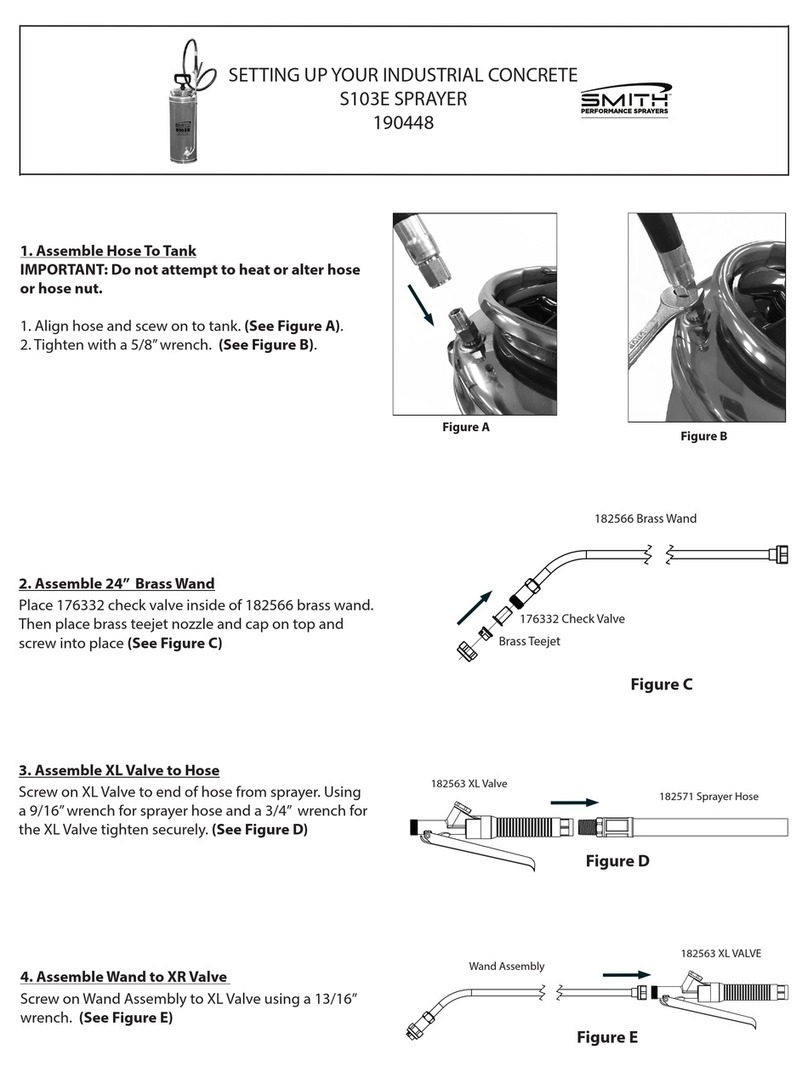
Smith
Smith S103E User instructions

Smith
Smith 190449 User manual

Smith
Smith AirVerter Stencil Pro CT-100 User manual

Smith
Smith R300 User manual
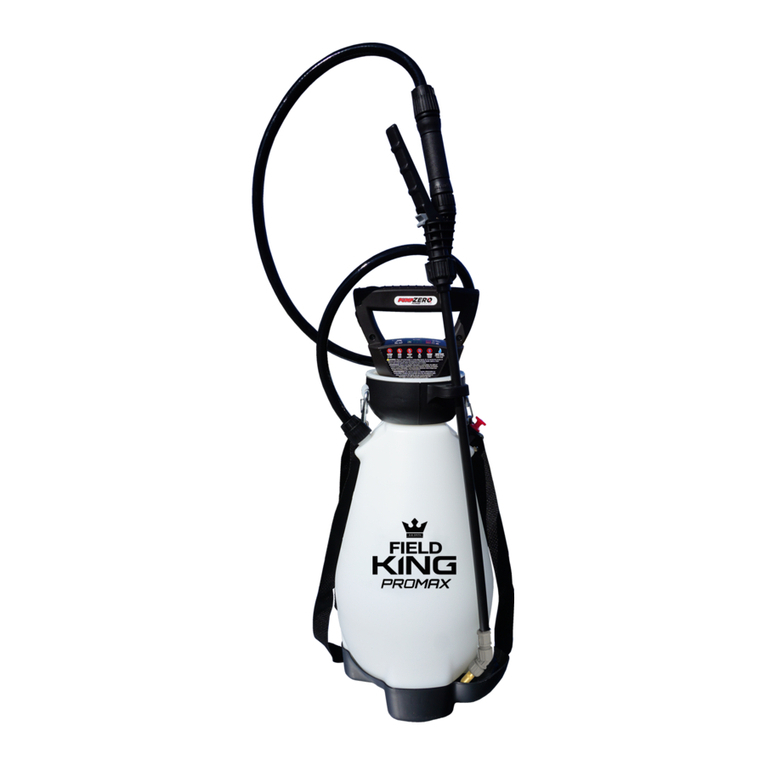
Smith
Smith R200 User manual
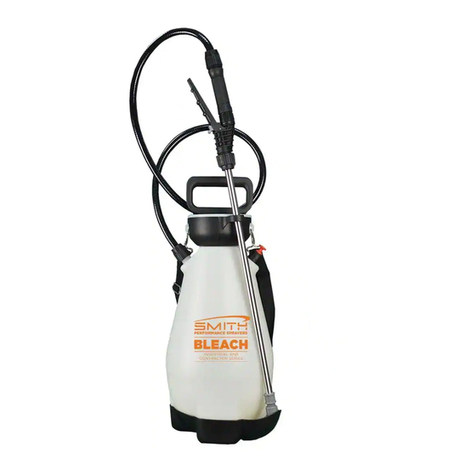
Smith
Smith Bleach Sprayer User manual

Smith
Smith SR-25 Sulky Driver Operating instructions

Smith
Smith R300 User instructions

Smith
Smith R200 User manual
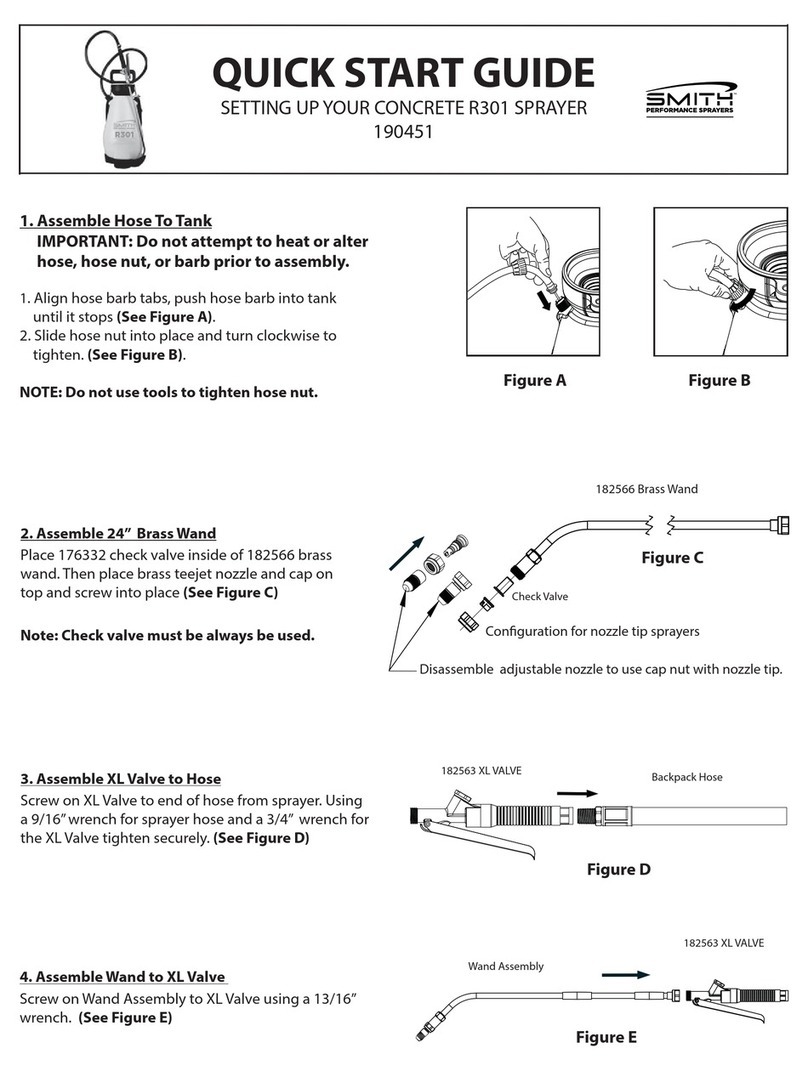
Smith
Smith R301 User manual
